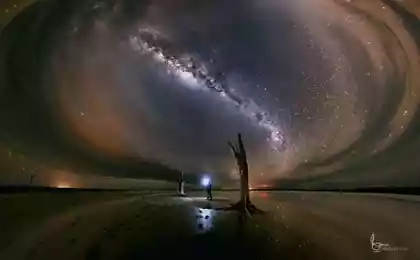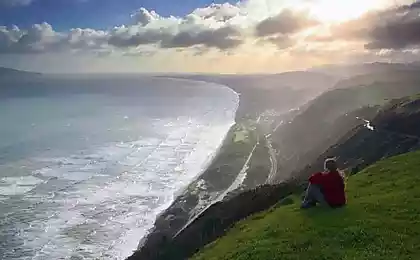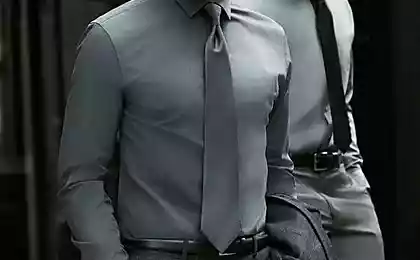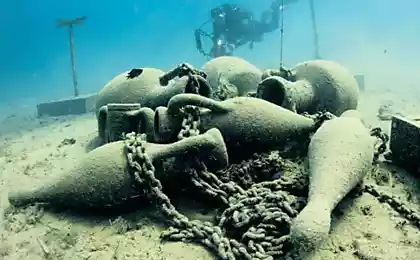994
10 mysterious civilizations, from which almost nothing left, but sorry
Many of our school days historian excited stories about peoples and civilizations that inhabited our planet tens of centuries ago. It is hard to imagine, but people loved, had children, fought, killed, and all that is left of them - a few bricks and a pair of ceramic shards.
Extant ruins of magnificent palaces and temples, not only to remind us that nothing lasts forever, but also make you think: and from what will be the cultural layer of our time before it will get future scientists? From tablets and smartphones? ..
Website offers you the ten ancient civilizations whose culture was almost lost, but still something that we know about them.
Maya h2> A classic example of civilization, a large part of the heritage which is irrevocably lost. Amazingly beautiful palaces and the whole town of the once mighty people inhabiting the Yucatan Peninsula (present-day Mexico, Belize and Guatemala), now virtually destroyed or absorbed by the jungle.
India civilization h2> One of the greatest civilizations of antiquity is also known as the Harappan (city Harappa was one of its centers). The number of inhabitants of the Indus Valley civilization at the height of up to 5 million people - about 10% of the total population of the world at that time.
Easter Island h2> The settlement of the island began, according to some estimates, about 300-year BC, the first inhabitants arrived from East Polynesia in huge boats, allows to overcome great distances.
Çatalhöyük h2> Çatalhöyük - one of the oldest cities in the world: its history began more than 9, 5 thousand years ago. The city was part of a well-developed Neolithic civilization that existed in the territory of modern Turkey.
Cahokia h2> Located on the territory of the US state of Illinois Cahokia mounds - all that remains of the civilization of Indians existed here long before the arrival of Europeans. Cahokia has long been the largest city in North America, its area was more than 15 km2, and the population reached 40 thousand people.
Gobekli Tepe h2> Temple complex Gobekli Tepe was built, supposedly, about ten thousand years BC. This is one of the most enigmatic works of ancient times - about him almost nothing is known.
Angkor h2> Angkor Wat - one of the most famous attractions of Cambodia, but not everyone knows that the temple complex was once a part of the huge city of Angkor, the capital of the Khmer empire. Angkor heyday came in the years 1000-1200 AD, and its population, according to some estimates, up to one million people - probably, at one time it was the largest city in the world.
Firuzkuh h2> Magnificent Minaret of Jam - the only preserved to our time building the city Firuzkuh ("Turquoise Mountain"), the capital of the empire Ghurid, which included present-day Afghanistan, Pakistan and Iran.
Nia h2> More than 1, 5 thousand years ago Nia was a flourishing oasis in which stayed on holiday caravans, going along the Great Silk Road, but guess it is difficult - here now desert, the middle of which is a small village of Niya, part of the Sintszyan Uygur Autonomous Region of China.
Settlement on Nabta Playa h2> It's hard to believe, but in what is now the Sahara once home to people with a highly developed culture and science - this is evidenced by the remains of an ancient observatory, which, presumably, was built 7-6, 5000 BC.
Extant ruins of magnificent palaces and temples, not only to remind us that nothing lasts forever, but also make you think: and from what will be the cultural layer of our time before it will get future scientists? From tablets and smartphones? ..
Website offers you the ten ancient civilizations whose culture was almost lost, but still something that we know about them.
Maya h2> A classic example of civilization, a large part of the heritage which is irrevocably lost. Amazingly beautiful palaces and the whole town of the once mighty people inhabiting the Yucatan Peninsula (present-day Mexico, Belize and Guatemala), now virtually destroyed or absorbed by the jungle.
The heyday of the Mayan civilization came in the first millennium of our era: they created a complex calendar, invented writing and mathematical formulas developed engineering design that allows them to build huge pyramids and multistage system of agricultural irrigation.
The gradual extinction of civilization began around the year 900, that is, long before the visit of Christopher Columbus to the Americas. Historians still do not know exactly what caused the loss of former power and destruction of the Maya, however, on some versions, the culprit - the internecine war and the deterioration of the climate, which resulted in famine, and the Maya were forced to leave their city.

India civilization h2> One of the greatest civilizations of antiquity is also known as the Harappan (city Harappa was one of its centers). The number of inhabitants of the Indus Valley civilization at the height of up to 5 million people - about 10% of the total population of the world at that time.
Harapptsy could boast the development of metallurgy, monumental architecture, sculpture, painting and unique literature, which, incidentally, has not yet been deciphered. Indies people actively traded with Mesopotamia, Sumer, Arabia and Central Asian states.
The high level of culture and industry are not saved Harappan civilization from destruction: about 3, 5 thousand years ago, a large part of the population of the valley moved to the southeast, leaving a huge city with wide avenues, condominium and water supply system.
The most likely reason for leaving harapptsev from their homes is considered the deterioration of the natural environment. For several centuries, immigrants have lost almost all the achievements of the ancestors, and the last carriers of the Harappan culture were destroyed by the invasion of the Aryans.

Easter Island h2> The settlement of the island began, according to some estimates, about 300-year BC, the first inhabitants arrived from East Polynesia in huge boats, allows to overcome great distances.
Before coming to Rapa Nui (the local name for the island) Europeans lived here two tribes: "long-eared", who created the famous moai statues, and "korotkouhie" who were actually in the position of slaves. In XVI-century "korotkouhie" revolted, in which almost all representatives of the ruling of the people were destroyed, and their culture and writing quickly fell into disrepair.
Now about the civilization of the ancient Rapa Nui people almost unknown. According to scientists, during its heyday it was a very short-lived and ended with deforestation around 1200, the year after which the island's population began to decline - most fled to other islands, while the rest have finished "korotkouhie».

Çatalhöyük h2> Çatalhöyük - one of the oldest cities in the world: its history began more than 9, 5 thousand years ago. The city was part of a well-developed Neolithic civilization that existed in the territory of modern Turkey.
From most of the other settlements of the period Çatalhöyük features a unique architecture: the city streets were not in the modern sense of the word, the houses were built close to each other, and they were through the roof. The inhabitants engaged in agriculture and animal husbandry, cultivated wheat and legumes, nuts and fruits were harvested. Most of the tools are made of obsidian, with their related and other settlements.
Çatalhöyük for its time was a true metropolis - it had a population of about ten thousand people, and archaeological finds point to the complex socio-political structure of the city and the development of culture. What made the residents to leave the city with over 2,000 years of history, is unknown.

Cahokia h2> Located on the territory of the US state of Illinois Cahokia mounds - all that remains of the civilization of Indians existed here long before the arrival of Europeans. Cahokia has long been the largest city in North America, its area was more than 15 km2, and the population reached 40 thousand people.
109 mounds have survived to our time - the ceremonial part of the complex, where various religious celebrations. At the center of the complex is the famous chetyrёhyarusny Monks Mound, the size of which is truly grandiose - 28 meters high and 290 meters long.
Some archaeological finds indicate that the Indians on the banks of the Mississippi were fine artists, sculptors and architects. They created jewelry from copper, shells, decorated the walls of temples artful ornaments and images of the gods, and even developed sophisticated irrigation system, which used the water of the rivers Mississippi and Illinois.
Around 1200, the year the people began to leave the city, according to some scientists, because of the appalling sanitary conditions that caused numerous epidemics and hunger.

Gobekli Tepe h2> Temple complex Gobekli Tepe was built, supposedly, about ten thousand years BC. This is one of the most enigmatic works of ancient times - about him almost nothing is known.
"Pot-bellied hill" (which is translated as the name of the archaeological site) is located in the southeast of modern Turkey. Around the "Hill" found no trace of a settlement, so historians believe that it served as the main religious building of the local nomadic tribes. Most likely, in the church constantly lived a few clergy and nomads come here to conduct ceremonies and rituals.
The temple was built in the shape of concentric circles, the surface of its columns decorated with relief images of animals and people. Currently we studied only about 5% of the territory of the complex, so archaeologists only have to answer many questions, chief among them - what the people who created it, and prayed in the temple.
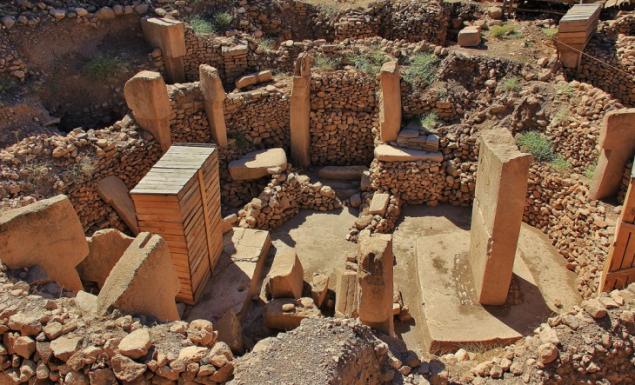
Angkor h2> Angkor Wat - one of the most famous attractions of Cambodia, but not everyone knows that the temple complex was once a part of the huge city of Angkor, the capital of the Khmer empire. Angkor heyday came in the years 1000-1200 AD, and its population, according to some estimates, up to one million people - probably, at one time it was the largest city in the world.
There are different versions as to why the city was in decline - from wars to disaster. Most of the ruins, which are excellent examples of Hindu architecture, overgrown jungle, making them difficult to study.

Firuzkuh h2> Magnificent Minaret of Jam - the only preserved to our time building the city Firuzkuh ("Turquoise Mountain"), the capital of the empire Ghurid, which included present-day Afghanistan, Pakistan and Iran.
The minaret was built in the end of the XII-th century to commemorate the victory of Sultan Giyaz-ud-Din of the Ghaznavids and was one of the main religious buildings of the city, but only a few decades, the army of Genghis Khan erased Firuzkuh to the ground, and the minaret of long forgotten.
Unfortunately, due to the inaccessibility of the monument and the unstable situation in Afghanistan, archaeologists still can not start full excavation in the area. Recently, experts have sounded the alarm: floods and earthquakes can destroy the minaret so urgently developed a system of measures to strengthen it and restore, it's one of a kind example of medieval culture Ghurid.

Nia h2> More than 1, 5 thousand years ago Nia was a flourishing oasis in which stayed on holiday caravans, going along the Great Silk Road, but guess it is difficult - here now desert, the middle of which is a small village of Niya, part of the Sintszyan Uygur Autonomous Region of China.
Desert safely hidden ruins of wooden houses, temples and palaces, so the existence here of a great city for a long time no one suspected. Niya was the real treasure for archaeologists: it found traces of many cultures and peoples, which connects the Silk Road. In the city the thousands arriving merchants, scholars, pilgrims and adventurers of all sorts, that turned him into a boiling pot in which "cooked" civilization of China, Europe, Africa and Central Asia.
Gradually, the Silk Road lost its importance: the traders are increasingly preferred to sea travel, so Nia went into decline. Now the remains of this unique cultural and historical education scrutinize archaeologists.

Settlement on Nabta Playa h2> It's hard to believe, but in what is now the Sahara once home to people with a highly developed culture and science - this is evidenced by the remains of an ancient observatory, which, presumably, was built 7-6, 5000 BC.
Residents of the settlements on the lake Nabta Playa know how to bake and paint pottery, engaged in cattle breeding and agriculture.
Astronomical building, which for a thousand years older than Stonehenge, allowing the inhabitants of these places to determine the summer solstice, which was followed each year the lake spill - because they knew it was time to move to the "winter quarters". Like many other ancient cities, a settlement on the lake Nabta Playa ruined climate - he gradually became more arid, and in the end, people leave these places.
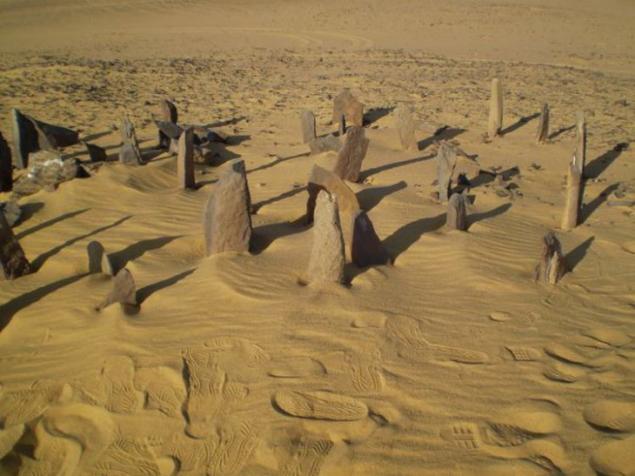
via www.publy.ru/post/8387
7 facts about cocaine king Pablo Eckobare, money which could feed the whole world
How to recover unsaved Word document










